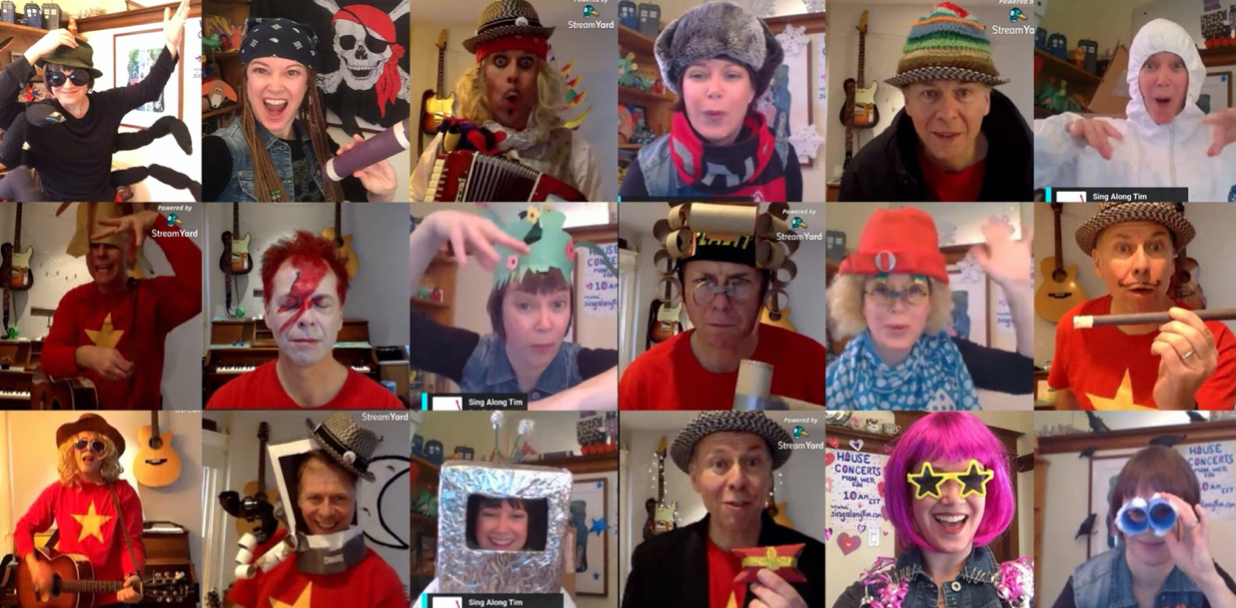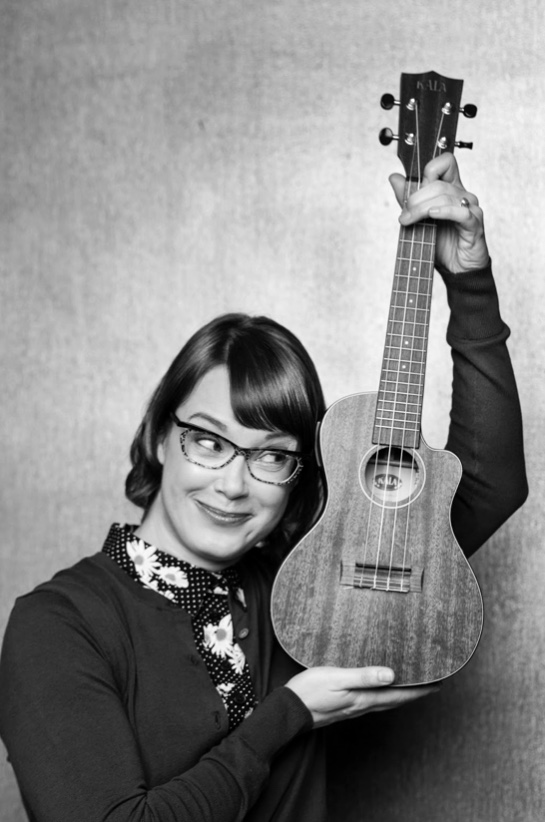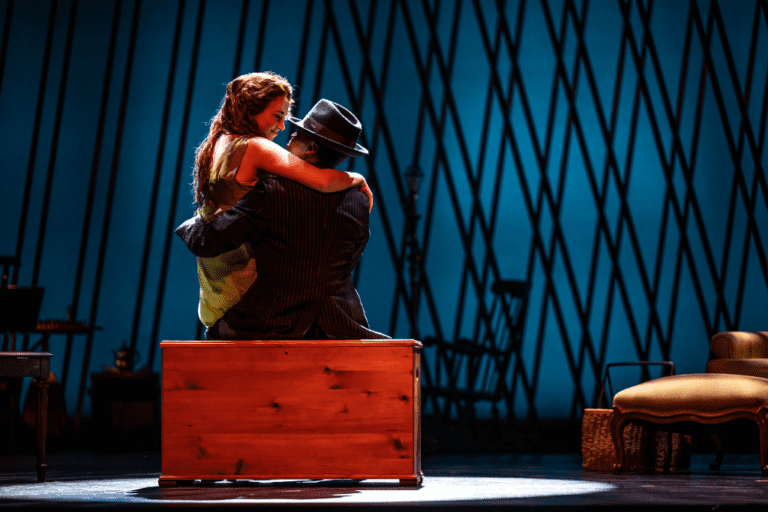An unexpected light: from the big stage to the small screen
How creating for young audiences returned hope
I’m standing in the middle of the magnificent Royal Alexandra Theatre, looking out at 1, 244 red velvet seats spread three-tiers high.
It’s breathtaking.

A chance to perform centre stage here is always both exhilarating and terrifying. I’m a standby in the Toronto Company of Come From Away. On any given day, sometimes with only a moment’s notice, I’ll receive a text from stage management saying, “you’re going on.”
Then I’ll jump into costume and ready myself to perform any one of the four, strong, female lead roles that I cover in the show.
Tonight, I’m playing Beulah.
But something feels off.
All week, audiences have been decreasing in size. There’s talk of a virus going around, and what at first seemed almost trivial now seems uneasy, uncertain, tense.
There’s something in the air.
Something’s coming.
For the past two and a half years, Friday nights have usually been a guaranteed sell-out.
Tonight, we’re lucky if every third seat is filled.
It’s March 13, 2020, and I never could have imagined what happened next.
One year later, I’m remembering the show’s goodwill messaging and looking back on how I’ve responded during this global crisis, making online music and theatre for young audiences in a medium that often makes you wonder if an audience is even there.
For those new to the show, Come From Away is a Canadian musical written by life and creative partners Irene Sankoff and David Hein. It tells the true story of what happened in the week following the September 11, 2001 attacks when 38 planes were ordered to land unexpectedly in the small town of Gander, Newfoundland.

It’s less a musical about 9/11, and more about 9/12 and the inspirational acts of human kindness that multiplied in the days that followed. It’s about how people from all walks of life came together in the face of a crisis to help each other out.
Last year, around this time, the world was entering its own state of crisis as the World Health Organization declared a global pandemic. I remember watching the news and wondering what in the world was going on – what was this?
Every day, COVID-19 dominated more and more headlines. As health risks trickled into public consciousness and closures started happening, I remember standing on that stage, thinking:
“Should we be here right now?”
“Should those audience members out there be sitting so close?”
So many lines from the show were resonating with me in new and profound ways:
“You are here at the start of a moment.” (“Welcome To The Rock”)
“Wondering if there’s someone going to clue us in, tell us all what’s happening.” (“Wherever We Are”)
“I need to do something to keep me from thinking of all of those scenes on the tube. No, I can’t watch the news anymore!” (“On The Edge”)
That night, I remember looking at my cast mates, taking stock and hearing an inner voice:
“Savour this.”
That ended up being our final show.
I recognize that my story is no different than so many of the other hundred thousand arts workers across the country who also lost their jobs that week. I have so much privilege living in Canada, with a warm place to sleep, food on my table, and more than my basic needs met. While others have admirably been working on the front lines, I’ve been searching for my own way to contribute while also grappling with what this has all meant to my identity as an artist.
“How are you feeling?,” people asked in the days that followed.
“Numb.”
Suddenly, I found myself with so much time. While other artists took a rest or legitimately felt unable to create, my coping strategy was a mantra:
“Don’t think. Keep going. What’s next?”
I needed to feel a sense of control. I wanted to DO something, MAKE something, keep art ALIVE. Then it struck me:
“I CAN make something, and I want to make it for KIDS!”
As an adult, I felt unnerved by what was happening in the world. How scary was this time for young people, though? How uncertain for families?
Outside of illness or a Canadian Snow Day, staying home from school was unheard of. Staying home indefinitely was inconceivable. Nothing could ever be so catastrophic as to keep kids out of school with no return date.
What would kids do with all of that time at home?
Could I do something to help bring them comfort?
Just like the people of Newfoundland sprang into action during 9/12 and the days that followed, I was searching for my own way of helping out. I wanted to use music and theatre to connect with my community.
For the last decade, I’ve been in a band for kids. We’re called Sing Along Tim & the Pacifiers, and our aim is to make interactive folk-rock music that both parents and kids want to hear. We’ve toured Canada, recorded two studio albums, and played many festivals.
So, I called up my talented bandmate, musician, songwriter and actor Tim Machin, blurting out:
“Want to make a show for families with me?!?”
And Sing Along Tim’s Homemade House Concerts was born.

The goal was to create a live, half-hour, musical variety show full of music, movement and crafts. We wanted to make something that would offer kids a distraction from what was going on in the real world.
But how were two of us going to do this live and online from our separate homes?
We cheered once we figured out the perplexing tech that would allow us to perform together, but apart, only to then realize:
“We can’t sing or speak at the same time!”
Sound latency meant no harmonies, no duets, no…band?
And could we ‘reach’ kids through a screen?
You won’t find a more honest audience than a bunch of 4-year-olds. If you can’t hold their attention, they have no qualms boldly voicing their opinion or simply walking away. I remember, once, doing a show where bored school-age kids threw pennies at us, and another, where I naively entered as Jack in Jack & The Beanstalk to the wailing critique of a child:
“Thaaaaaat’s not a boyyyyy!!!”
In addition, performing live over the Internet is odd. I did everything I’d normally do on stage in front of a live audience but instead, in front of my laptop, with no idea if anyone was even tuning in.
I went from hearing the interactive roar of a 1400-person Come From Away audience to a silent, blinking red light.
Despite the challenges, we pushed through. Three times a week we wrote, performed, and produced a half-hour show for families thinking:
“Surely the pandemic will only last a couple more weeks. Maybe a month.”
In three months, we did over forty shows.
What I wasn’t expecting was how it all became my light. Knowing that during this time of crisis I was finding a way to connect with others using my art made me feel purpose.
Parents shared with us that we’d become part of their routine. We learned that folks had tuned in from all over the world, across Canada, the US, England, and even Denmark.
I went from hearing the interactive roar of a 1400-person Come From Away audience to a silent, blinking red light.
Recently, we wrote an interactive mystery series called “Penelope Pineapple’s Perplexing Puzzle.” It was a sequence of problem-solving videos that challenged kids with playful puzzles and collaborative games weaving together science, history and math, and culminated in a live, online performance.

The other day the mailman stopped me in my driveway, uncertain of an address jotted in a child’s handwriting:
“Is there a Penelope Pineapple who lives here?”
My heart leapt! How could I explain that what I’d hoped to give kids was also giving back to me?
Inside the envelope was a coded message for Penelope to decipher. Happiness welled up in me, knowing I’d infused a little magic into a small person’s life. What was intended to distract, entertain, and provide hope for young audiences, turned around and was doing the exact same things for me.
Right now, it’s hard enough for kids to attend school, let alone extracurricular activities. At the time of writing this article, children are still not permitted to sing together or join in a music circle. Art has been the entertainment go-to of the pandemic and no adult can deny the soothing role this has filled. Kids are our audiences, our critics, and our creators of tomorrow, and it is essential that we keep music and art alive for them.
In a time when it feels like the odds are stacked against us, I find myself asking hard questions:
“Why am I still making things?”
“Who is it for?”
This past year I’ve done my best to put one foot in front of the other. Just as the residents of Gander, Newfoundland and its surrounding communities came together through acts of human kindness, my wish was to also find a way of helping, using music and play to connect with young people during an unpredictable and scary time. Until we can all gather together again safely in person all I know is that now, more than ever, creating for young people in a time of crisis is giving as much hope back to me as I hope it is to them.
And I couldn’t be more grateful for that light.









Comments